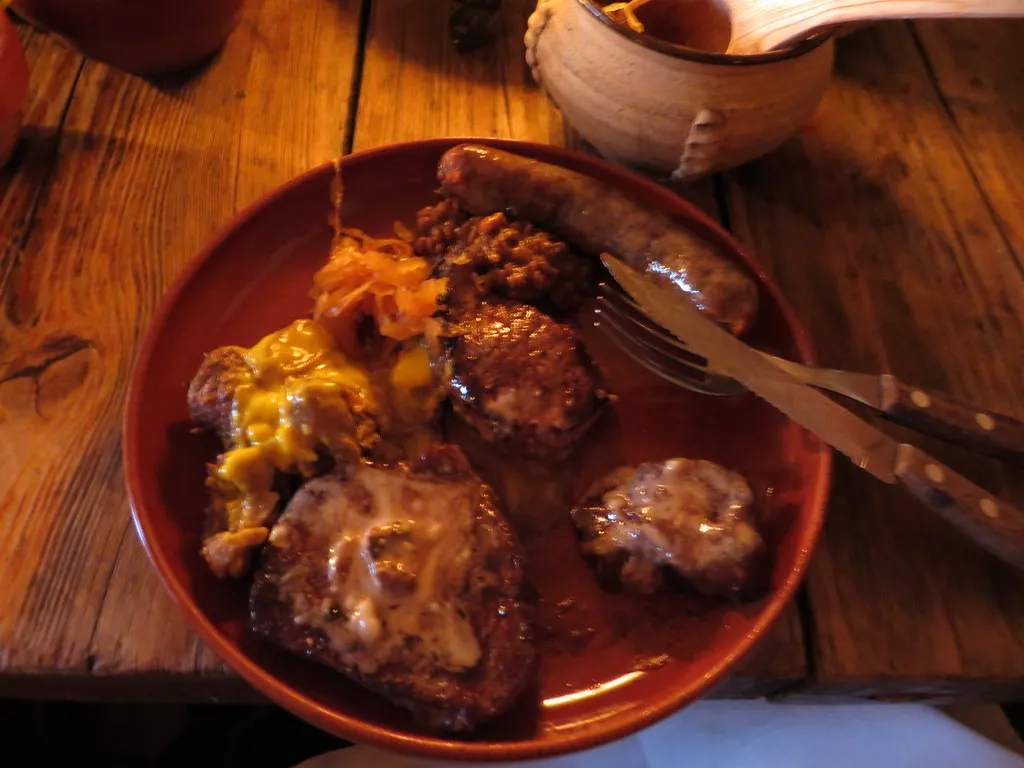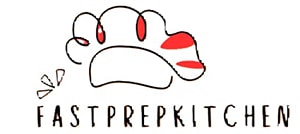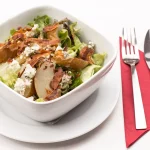The Best Fluffy Pancakes recipe you will fall in love with. Full of tips and tricks to help you make the best pancakes.
Have you ever wondered what it was like to sit at a grand medieval banquet, feasting like a knight in a castle’s great hall? The Middle Ages were a time of rich flavors, hearty meals, and rustic cooking methods that shaped much of the cuisine we know today. From simple peasant pottages simmered over open fires to lavish feasts filled with roasted meats, honey cakes, and spiced wine, medieval food offers a fascinating glimpse into history.
In this post, we’ll explore what people really ate in the Middle Ages, uncover essential ingredients used in medieval cooking, and share easy, authentic recipes you can try in your modern kitchen. Whether you’re hosting a themed dinner party, planning a historical reenactment, or just curious about the flavors of the past, these dishes will let you cook — and eat — like a knight.
What Did People Eat in the Middle Ages?
Food in the Middle Ages reflected social class, geography, and availability of ingredients. What a knight or noble enjoyed at a lavish feast was very different from the daily meals of peasants working the land. Still, both groups relied heavily on local produce, grains, and preserved foods, since refrigeration did not exist.
Noble Feasts vs. Peasant Meals
Nobles and knights dined on roasted meats, fish, cheeses, and exotic spices imported from distant lands, showing off their wealth and status. Meals were often served in multiple courses, with rich sauces, pastries, and sweetened dishes. By contrast, peasants survived on simple pottages (thick stews of grains, beans, and vegetables), coarse bread, and occasionally fish or dairy. Meat was a rare luxury for the lower classes.
Common Ingredients and Flavors
Across all classes, staples included bread, grains (barley, oats, wheat), beans, and root vegetables like turnips, onions, and leeks. Fresh herbs such as parsley, sage, and rosemary flavored everyday meals, while the wealthy had access to imported spices like cinnamon, saffron, and cloves. Sweeteners came from honey, since sugar was scarce and costly.
Medieval Cooking Techniques
Cooking was done over open hearths or in large kitchen fireplaces, with techniques such as spit roasting, boiling, baking, and stewing. Large pots of pottage simmered for hours, providing a filling and communal meal. Bread was baked in clay or stone ovens, while meats were often roasted whole over a fire, basted with herbs and wine.
Role of Feasts and Banquets in Knightly Life
For knights and nobles, food was more than nourishment — it was a symbol of power. Feasts were held in castle great halls, with trenchers (stale bread plates), goblets of ale or mead, and tables overflowing with roasted game, pies, and spiced desserts. Entertainment such as music, dancing, and storytelling accompanied these banquets, turning dining into a grand social event.
Essential Ingredients for Medieval Cooking
Cooking in the Middle Ages relied heavily on local, seasonal ingredients, along with a few imported luxuries for the wealthy. While the foods differed between peasants and nobles, some staples formed the foundation of medieval diets. Below are the key categories of ingredients and what you’ll need to stock your own “castle kitchen.”

Herbs and Spices
Herbs were widely available, while spices were costly imports used mainly in noble kitchens. These flavors defined medieval cooking:
- Sage – earthy and savory, often used in meats and stews
- Rosemary – aromatic herb for roasts and breads
- Parsley – a common garnish and flavor enhancer
- Thyme – added to soups and pottages
- Cinnamon (½ teaspoon per recipe) – a prized spice for sweet and savory dishes
- Cloves (2–3 whole cloves per stew or drink) – warming and aromatic
- Saffron (a pinch for coloring and flavoring rice or sauces) – considered a luxury
Grains, Bread, and Pottage
Grains were the backbone of the medieval diet. They were eaten as bread, porridges, or stews (pottage).
- Barley (1 cup for 4 servings of pottage) – common among peasants
- Oats (1 cup for breakfast porridge) – filling and affordable
- Wheat flour (2–3 cups for bread making) – reserved for nobles and higher classes
- Rye (1 cup mixed with wheat or barley) – darker, denser bread for everyday meals
Meat, Fish, and Dairy
Knights and nobles feasted on roasted meats, while peasants often had to settle for fish, eggs, or dairy.
- Chicken or Duck (1 whole bird for roasting, serves 4–6)
- Beef or Venison (500 g / 1 lb cuts for stews or roasts)
- Salted Fish (1 fillet per person) – preserved for winter
- Cheese (100 g / 3.5 oz per serving) – both fresh and aged varieties were common
- Eggs (2–3 per recipe) – versatile for binding, baking, or eating on their own
Drinks of the Time
Beverages were an important part of medieval dining. Water was often unsafe, so people drank fermented or spiced drinks.
- Mead (1 cup per serving) – honey wine, sweet and golden
- Ale or Beer (1 pint per person) – everyday drink for both peasants and nobles
- Mulled Wine (½ bottle spiced with cinnamon, cloves, and honey) – popular at feasts
Essential Tools and Utensils (Medieval-Inspired, Modern Equivalents in English)
To recreate medieval cooking at home, you don’t need a castle kitchen—modern tools will do the trick:
- Cast iron pot or Dutch oven (for pottage and stews)
- Roasting spit or oven roasting pan (for meats)
- Clay or ceramic baking dish (for pies and bread)
- Wooden spoon (for stirring and serving)
- Mortar and pestle (for grinding herbs and spices)
- Ladle (for soups and stews)
- Bread knife and cutting board (for rustic loaves)
Easy and Authentic Medieval Recipes to Try
The beauty of medieval cooking lies in its simplicity and hearty flavors. Below are four easy recipes inspired by the Middle Ages that you can prepare with modern tools while keeping their historical charm.
Hearty Pottage (Medieval Peasant Stew)
Pottage was the daily staple for peasants, made with grains, root vegetables, and herbs simmered over an open fire.
Ingredients (serves 4):
- 1 cup pearl barley or oats
- 2 carrots, chopped
- 1 leek, sliced
- 1 onion, diced
- 2 garlic cloves, minced
- 6 cups vegetable or chicken stock
- 2 tbsp parsley, chopped
- 1 tsp thyme
- Salt and pepper to taste
Instructions:
- Heat a cast iron pot or Dutch oven over medium heat.
- Add onion, garlic, carrots, and leek. Cook until softened.
- Stir in barley, herbs, and stock. Bring to a boil.
- Simmer for 1–1.5 hours, stirring occasionally, until thick and creamy.
- Season and serve with rustic bread.
Tools: Cast iron pot/Dutch oven, wooden spoon, ladle, cutting board, bread knife.
Roast Meat with Herbs (Knight’s Feast Dish)
Knights and nobles loved roasted meats flavored with herbs and wine.
Ingredients (serves 4–6):
- 1 whole chicken (about 3–4 lbs / 1.5–2 kg)
- 2 tbsp olive oil or butter
- 1 tbsp rosemary, chopped
- 1 tbsp sage, chopped
- 1 tbsp parsley, chopped
- 3 garlic cloves, crushed
- 1 cup red wine or ale
- Salt and pepper to taste
Instructions:
- Preheat oven to 200°C / 400°F.
- Rub chicken with oil, herbs, garlic, salt, and pepper.
- Place in a roasting pan and pour wine or ale around it.
- Roast for 1 hour 15 minutes (basting every 20 minutes) until golden.
- Rest 10 minutes before carving.
Tools: Roasting pan, carving knife, basting brush or spoon, oven mitts.
Medieval Honey Cakes (Sweet Treats)
Honey was the main sweetener in medieval kitchens, used in simple cakes and desserts.
Ingredients (makes 8–10 small cakes):
- 2 cups wheat flour
- ½ cup honey
- ½ cup unsalted butter (softened)
- 2 eggs
- ½ tsp cinnamon
- ¼ tsp cloves
- 1 pinch salt
Instructions:
- Preheat oven to 180°C / 350°F.
- Mix butter and honey until creamy. Beat in eggs.
- Add flour, cinnamon, cloves, and salt. Stir into a thick batter.
- Spoon batter into greased muffin tin or shape small round cakes by hand.
- Bake for 18–20 minutes until golden.
Tools: Mixing bowl, wooden spoon, muffin tin or baking tray, oven.
Mulled Wine (Medieval Spiced Drink)
A favorite at feasts, mulled wine was warmed with spices and honey.
Ingredients (serves 4):
- 1 bottle red wine (750 ml)
- 3 tbsp honey
- 2 cinnamon sticks
- 4 cloves
- 1 slice fresh ginger (about 2 cm / 1 inch)
- 1 orange, sliced
Instructions:
- Pour wine into a saucepan and heat gently (do not boil).
- Add honey, spices, ginger, and orange slices.
- Simmer for 20 minutes over low heat, stirring occasionally.
- Strain and serve warm in cups or goblets.
Tools: Saucepan, ladle, strainer, wooden spoon, heatproof mugs or goblets.
Cooking Like a Knight at Home
Recreating medieval food today doesn’t mean you need a stone hearth or castle banquet hall. With a few simple adaptations, you can bring the flavors of the Middle Ages into your own kitchen. Here are some practical ways to cook and serve authentic medieval recipes at home.
Adapting Medieval Recipes for Modern Kitchens
Most medieval dishes relied on slow cooking, roasting over open flames, or boiling in large pots. To adapt:
- Use a slow cooker or Dutch oven for hearty pottage and stews.
- Replace spit-roasting with an oven roast for chicken, beef, or game.
- Swap hard-to-find ingredients (like venison) with readily available meats such as beef, lamb, or chicken.
- Substitute mead or ale with apple cider or white wine if needed.
Tools and Utensils You Can Use Today
While knights ate with knives and their hands, you can keep things cleaner while staying true to the rustic feel:
- Dutch oven or cast iron pot (for stews and soups)
- Roasting pan or grill (for meat dishes)
- Wooden spoons and ladles (authentic and practical)
- Ceramic or clay baking dish (for pies or bread)
- Mortar and pestle (for grinding herbs and spices)
- Rustic wooden boards or plates to serve food like trenchers
Hosting a Medieval-Themed Dinner
Cooking like a knight is more fun when paired with the right atmosphere. To set the mood:
- Serve food family-style on large platters, encouraging sharing.
- Use candles and wooden goblets to mimic a castle’s great hall.
- Offer a limited menu of 3–4 rustic dishes instead of modern variety.
- Encourage guests to try eating with minimal utensils, as was done in the Middle Ages.
Pairing Food with Authentic Drinks
Drinks were as important as food in medieval times. To complement your meal:
- Serve mead or ale in mugs for authenticity.
- Offer mulled wine with spices for a knightly touch.
- Provide herbal teas like mint or sage for a non-alcoholic option.
- Finish the feast with warm spiced milk or honey water for a sweet ending.
⚔️ By adapting recipes, using rustic utensils, and setting the right mood, you can easily cook and dine like a knight without leaving your kitchen. It’s not just about the food—it’s about recreating the medieval experience at your table.
Tips for Serving a Medieval Feast
A medieval feast was more than just food—it was an experience of community, abundance, and celebration. If you want to bring that authentic atmosphere to your table, presentation and setting are just as important as the recipes themselves. Here’s how to serve your medieval-inspired dishes in true knightly style.
Using Trenchers (Bread Plates) for Authenticity
In the Middle Ages, people often ate from trenchers—thick slices of stale bread used as edible plates. To recreate this tradition at home:
- Slice a round loaf of rustic bread into thick slabs (about 1–2 inches).
- Serve stews, roasted meats, or sauces directly on top of the bread.
- After the meal, trenchers could be eaten, fed to the poor, or given to animals.
This small detail instantly adds historical charm to your feast.
Creating a Banquet Atmosphere
Medieval feasts were held in castle great halls, lit by fire and candles. You can capture that same mood by:
- Using long wooden tables or benches if possible.
- Decorating with candles, lanterns, or torches for warm lighting.
- Adding herbs and greenery as table runners instead of flowers.
- Serving food in large bowls, wooden platters, or clay dishes for a communal style.
Sharing Food the Medieval Way
Feasting in the Middle Ages was a social event, and meals were often shared between guests. To recreate this tradition:
- Serve dishes family-style—large platters of roasted meat, bowls of pottage, and baskets of bread passed around the table.
- Encourage guests to eat with fingers and knives, keeping forks to a minimum.
- Provide goblets or mugs for drinks, filled with mead, ale, or mulled wine.
Music, Costumes, and Entertainment Ideas
To make your medieval feast truly unforgettable, add touches of entertainment:
- Play medieval or folk music in the background for ambiance.
- Encourage guests to wear simple costumes—tunics, cloaks, or dresses.
- Include storytelling, poetry reading, or board games (like chess or dice) to mimic medieval pastimes.
- End the feast with a toast or blessing, as knights and nobles often did.





